Headlands Dunes is a 25-acre preserve just to the east of Headlands Beach State Park. When I’m here I can hardly believe that I’m in Ohio… it’s such a unique place. The sand dunes just off shore of Lake Erie are rare in Ohio because most of the area adjacent to the lake has been developed. Surprisingly a number of plants that originated on the Atlantic coast grow in this small nature preserve. It is thought that they reached this far into the continent thousands of years ago when the immense weight of ice-age glaciers made this part of the continent sink downward. This allowed seawater to reach into Lake Ontario (the Great Lake just to the east of Lake Erie). The Atlantic coastal vegetation followed this ocean incursion into the continent and eventually spread to the shores of Lake Erie.
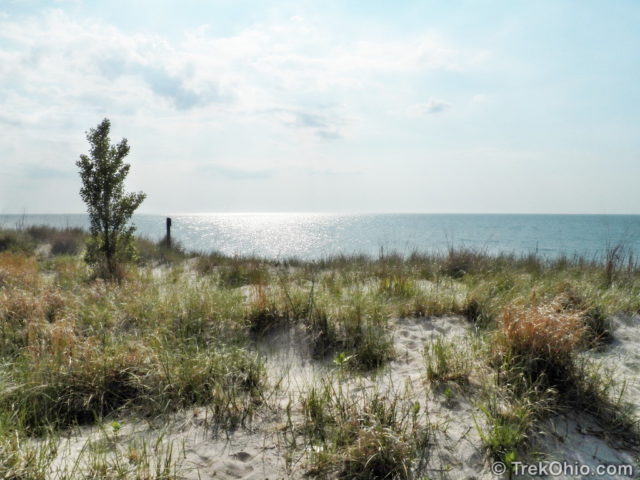
It’s hard for plants to live in drifting sand. As the wind blows the sand around, there’s the risk that they’ll be completely buried. However a couple Atlantic coastal plants are able to keep growing up through the sand: Beach grass (Ammophila breviligulata) and Switchgrass (Panicum virgatum). As their roots grow, they stabilize the dunes and stop the dunes from drifting. Once these botanical pioneers have achieved a foothold, other plants move into this sandy habitat.
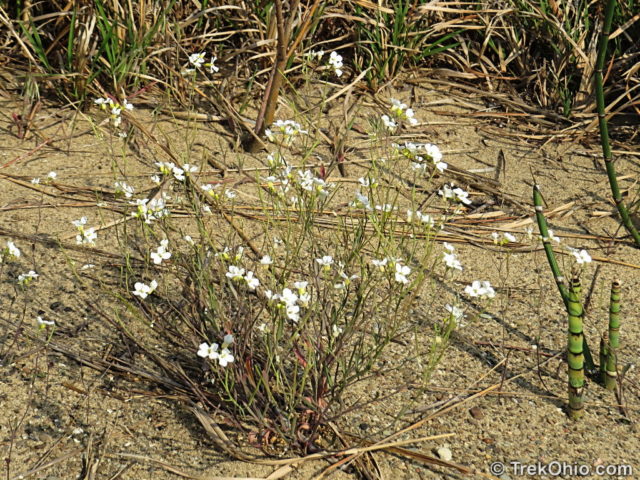
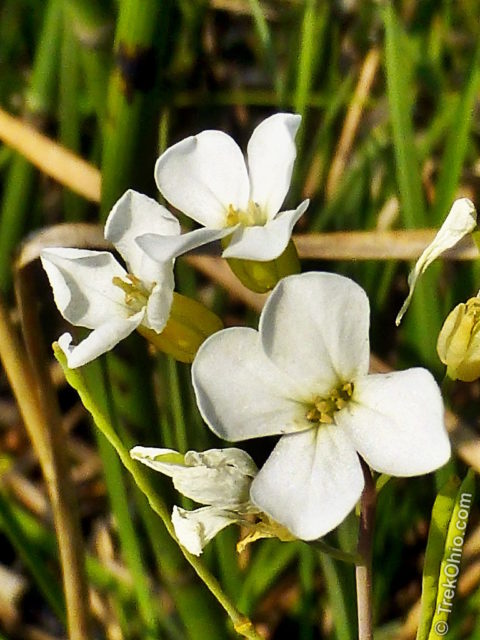
Because so many rare plants live in the preserve, it is important for visitors to stay on the marked trails.
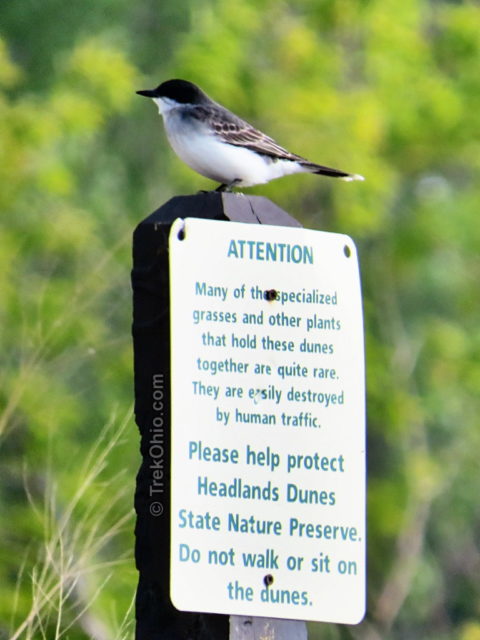
The sign in the above photo says:
Attention: Many of the specialized grasses and other plants that hold these dunes together are quite rare. They are easily destroyed by human traffic. Please help protect Headlands Dunes State Nature Preserve. Do not walk or sit on the dunes.
Let’s take a look at what the trails are like.
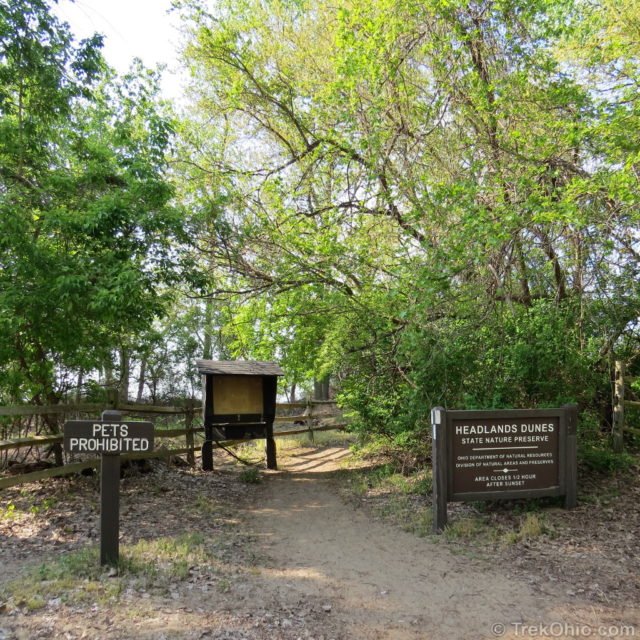
Once you exit the stand of trees, you see sand paths heading out in two directions. The one to the left leads more directly to Lake Erie. The one to the right approaches the treeline that separates the preserve from the harbor on the other side.
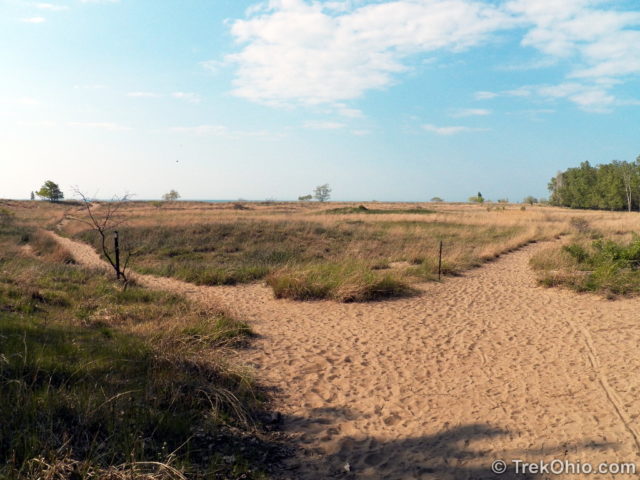
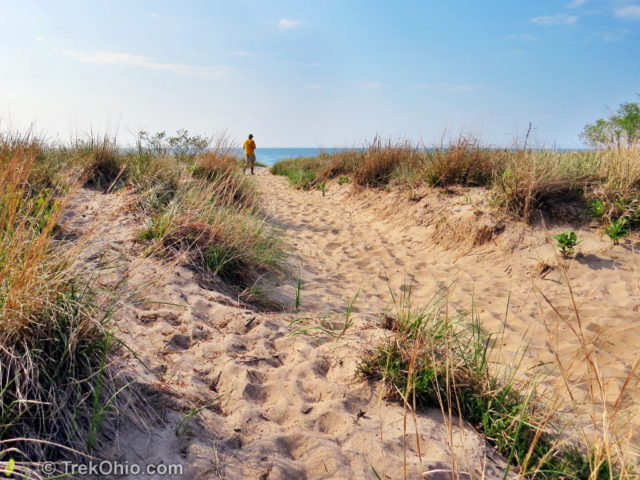
On the way we saw what’s known as scouring rush because pioneers used it to scour pans. It is a primitive, spore-bearing plant.
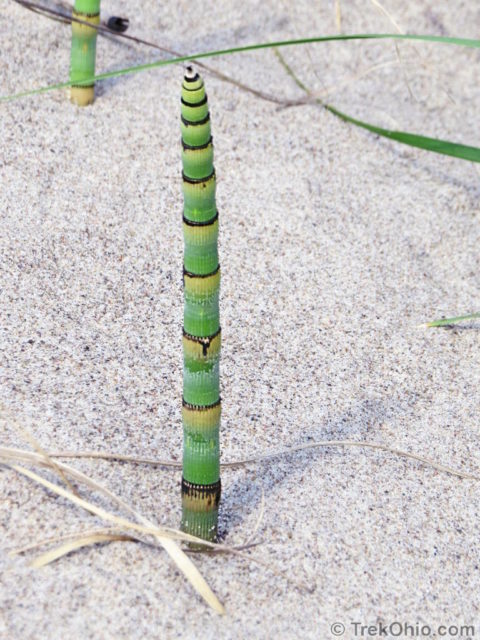
At the shoreline we saw two of Ohio’s most common gulls. The first one, the ring-billed gull, is one that I often see in central Ohio where I live.
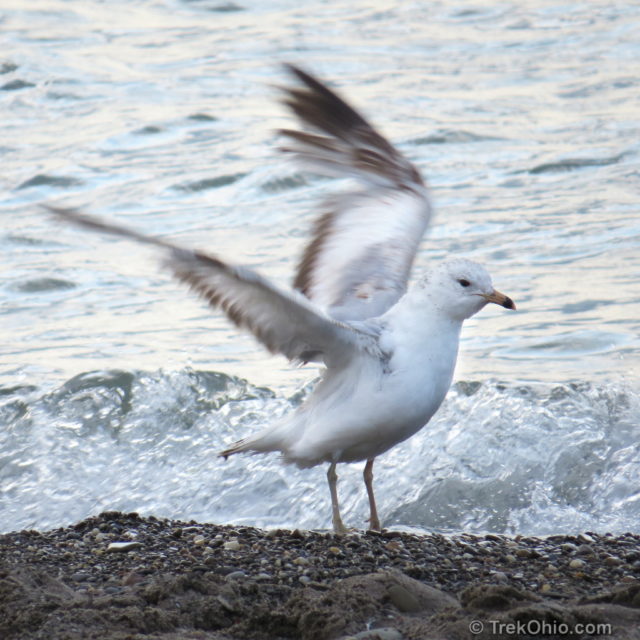
The second species looked like it was wearing earmuffs. This is what Bonaparte’s gulls look like when they aren’t decked out in their breeding plumage.
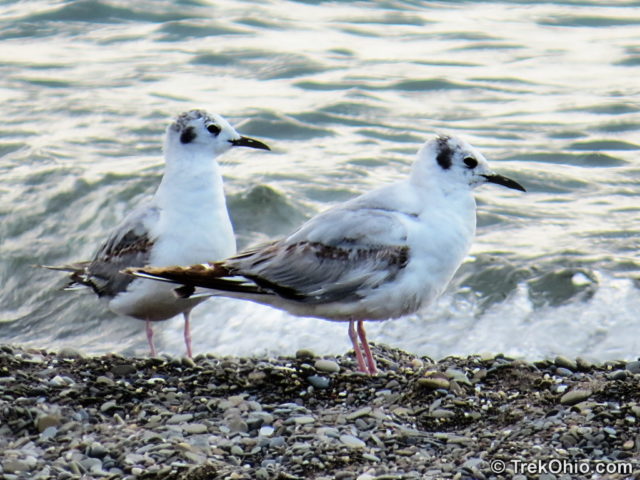
If you haven’t been to the shorelines of the Great Lakes, it’s amazing how much it feels like being on a seashore. This large, commerical vessel near the horizon reinforced that feeling.
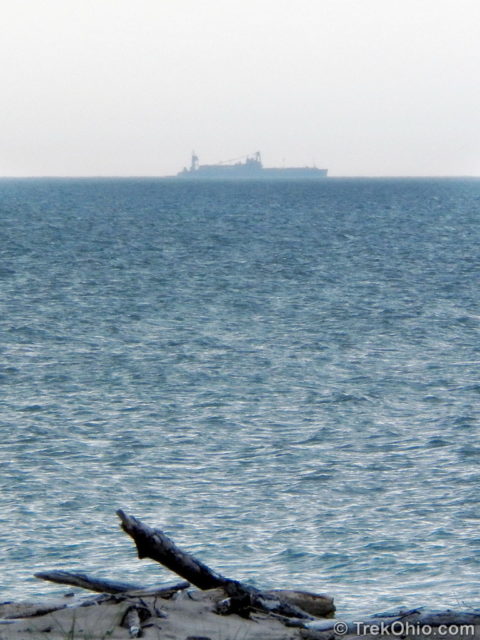
We then headed north on a trail toward the Fairport Harbor West Lighthouse at the end of the peninsula.
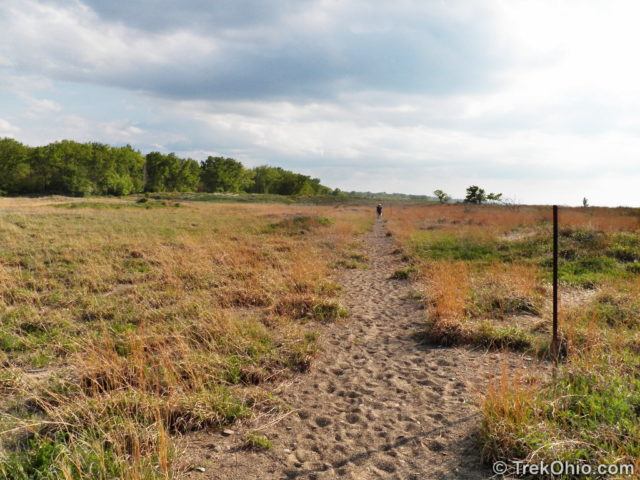
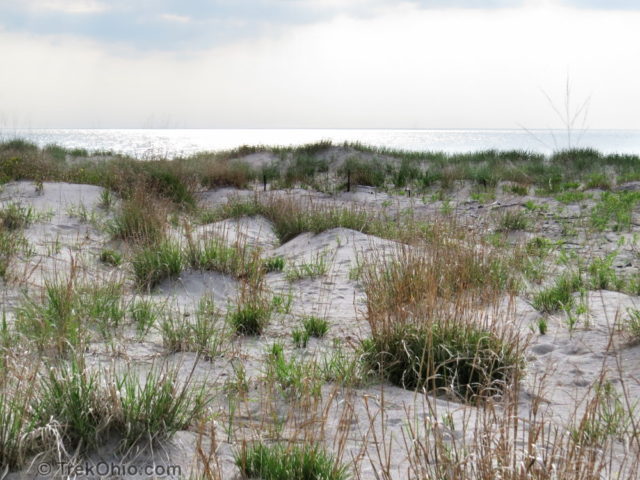
As we approached a treeline on the eastern end of the peninsula, we were surprised to see a deer browsing on grass.
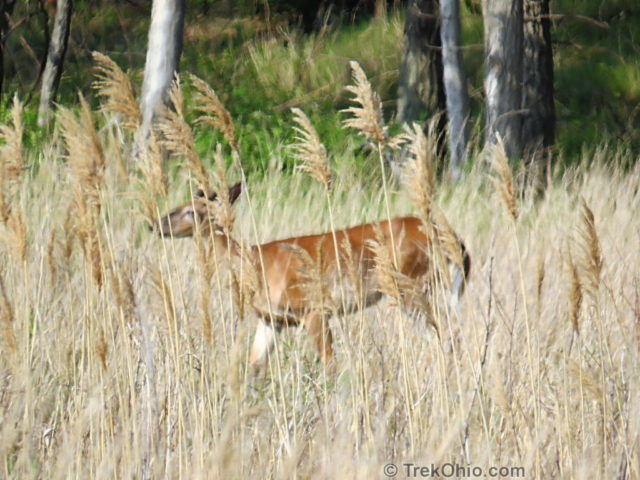
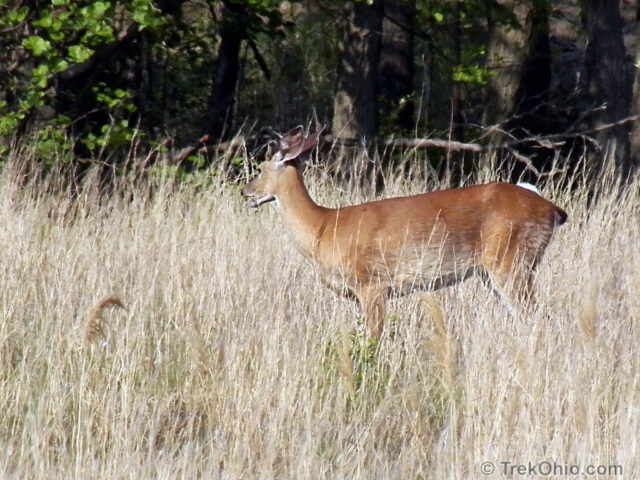
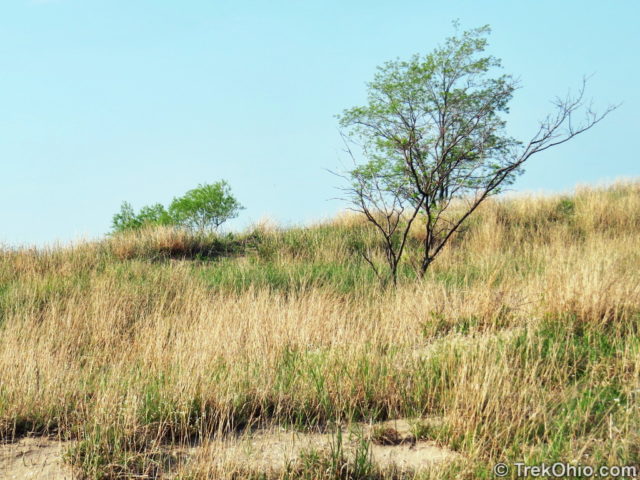
Our path joined up with another path that followed the treeline on the eastern side of the peninsula. We could see the old lighthouse in the distance at the end of the trail.
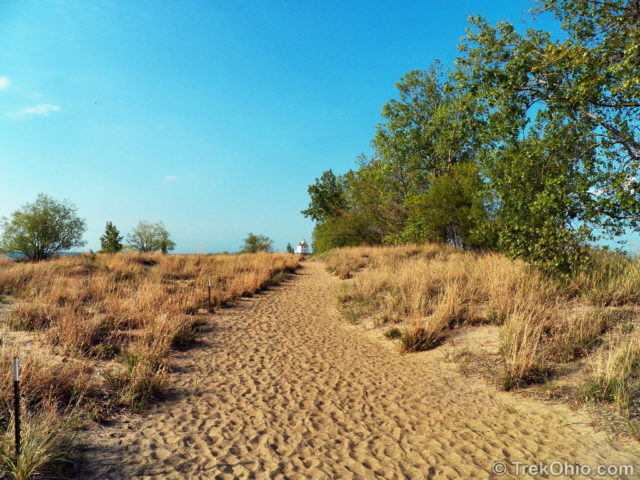
You could cut through the treeline to view the harbor on the other side. A breakwater lined the eastern side of the peninsula that made up the western side of the harbor.
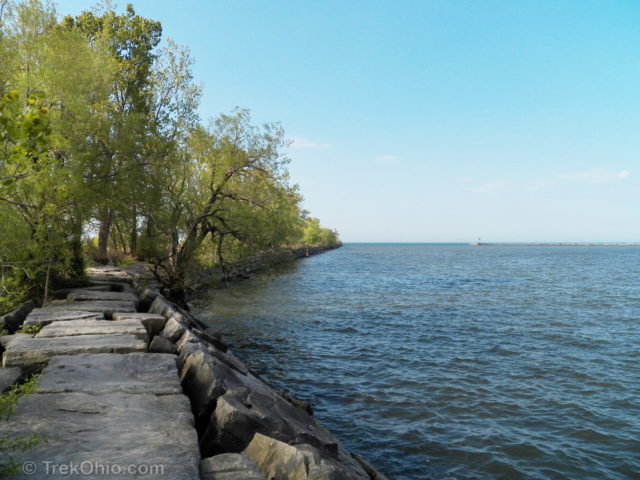
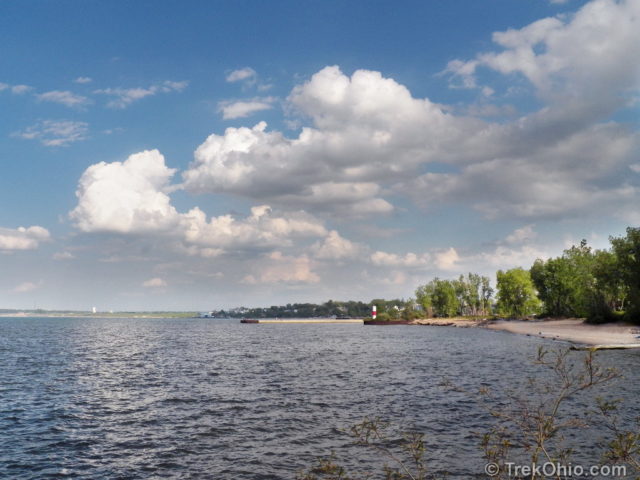
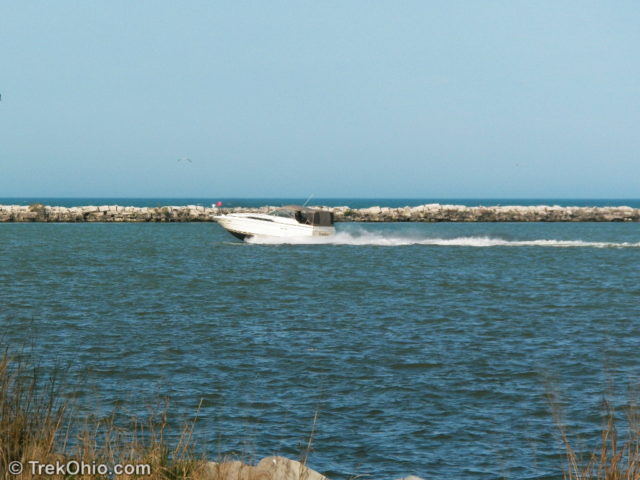
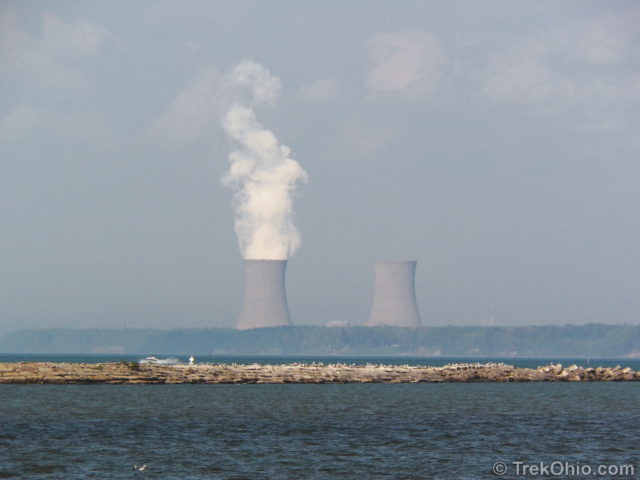
As we neared the northern end of the peninsula, the trail converges with the beach. You could see a lot of driftwood here and the breakwater leading to the lighthouse.
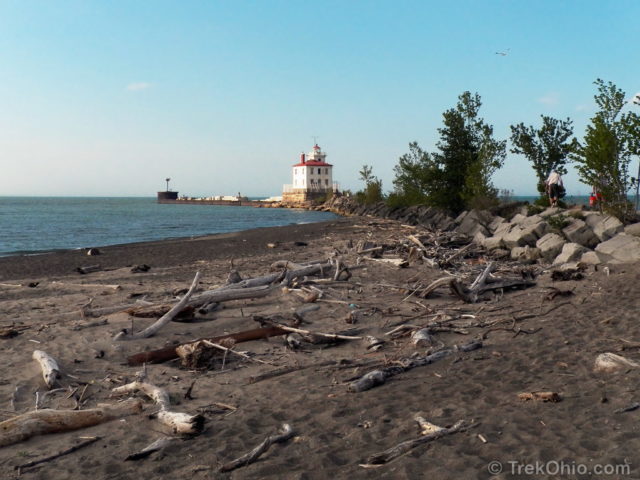
At first glance I thought I saw a killdeer walking on the beach here, but it turns out that it was a Semipalmated Plover. The two species are closely related. The easiest way to tell them apart is to look at the dark ring at the base of the neck. In the killdeer, this becomes two rings near the top of the chest, but only one ring for the Semipalmated Plover.
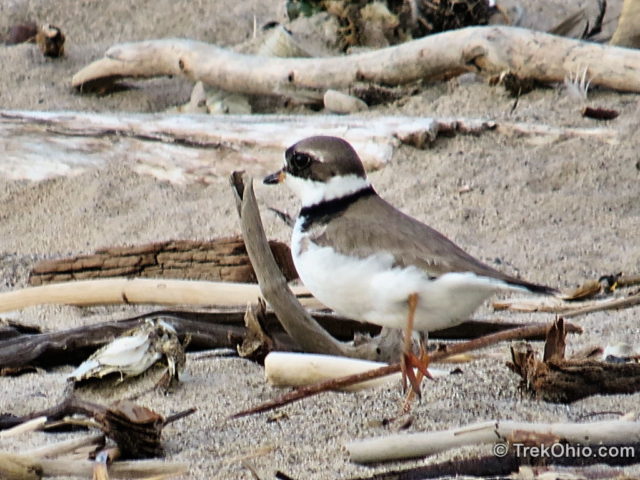
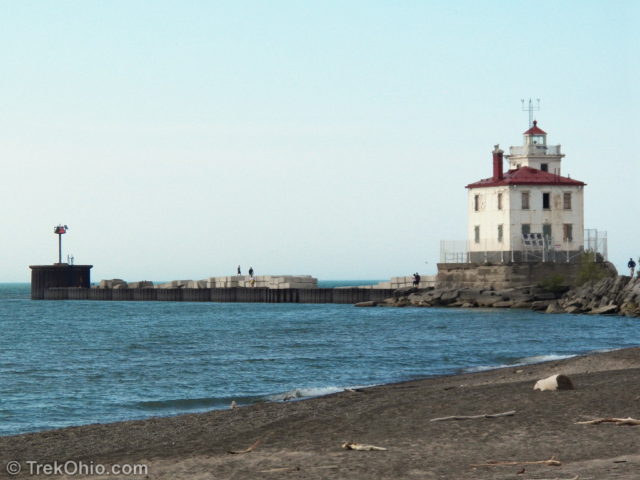
The Fairport Harbor West Lighthouse is not open to the public; as you can see there is a fence around the base of the property. It is a forty two foot tower that was completed in the 1920’s. The lighthouse was declared surplus by the state in 2005. Several attempts to auction the property fell through, until it was purchased by marketing executive Sheila Consaul in 2011. She has started work on restoring the building and plans to use it as a summer home. We visited the area last year prior to the start of restoration.
After reaching the lighthouse area, we turned back and walked the trail along the treeline. It was a really pleasant walk through a very special part of Ohio.
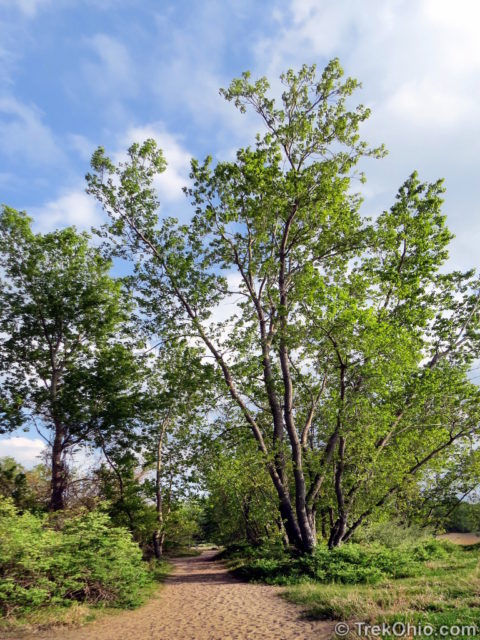
Additional information
- TrekOhio: Lake County Parks & Nature Preserves — This is the county where Headland Dunes State Nature Preserve is located; check this page out for links to the official site and for information on nearby parks and preservers.
- TrekOhio: Headlands Beach State Park — The state park is next to the preserve.
- Wikipedia: Equisetum hyemale
- All About Birds: Semipalmated Plover
- All About Birds: Eastern Kingbird
- Columbus Audubon: Ohio Gulls
- LighthouseFriends.com: Fairport Harbor West Breakwater, OH
- Fairport Harbor West Light House
Location
- Address: 9601 Headlands Road, Mentor, Ohio 44060
- GPS Coordinates: 41.760633, -81.285782
- Google Maps: View on map or get directions
- Misc.: Headlands Dunes State Nature Preserve and Headland Beach State Park share a parking lot and address. For easiest access to the state nature preserve, park in the far northeast corner of the parking area.
More on Lake County
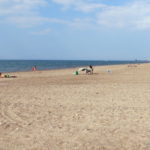
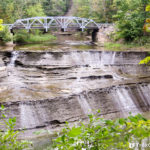
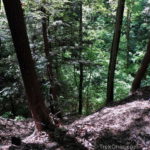
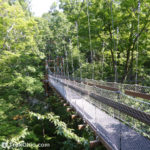
I love Your landscape photos as animals also.
Very interesting post, I’d not heard of those sand dune plants before. The sea looks amazing in the sunshine, you couldn’t have picked a better day to visit! Loved all the photos 🙂 x
You’re right, I never would have expected all that in Ohio! Thanks for the virtual trip through the park 🙂